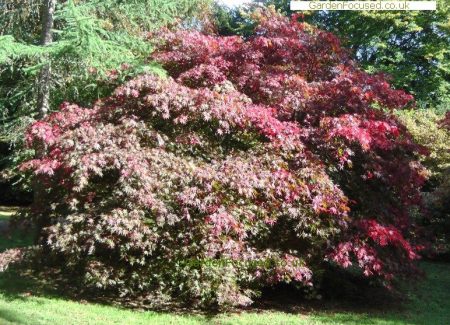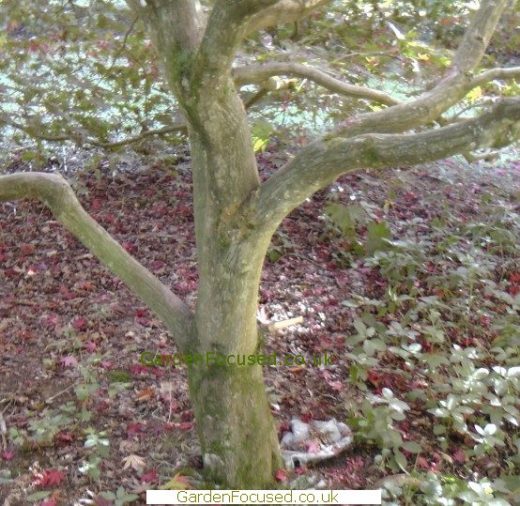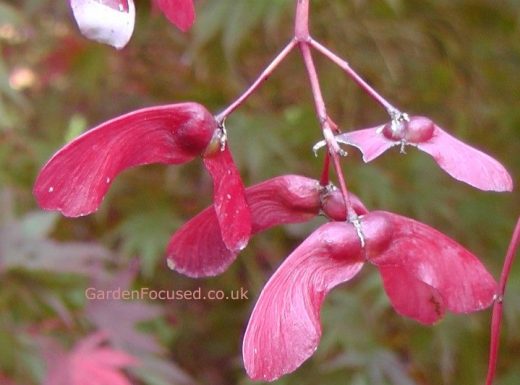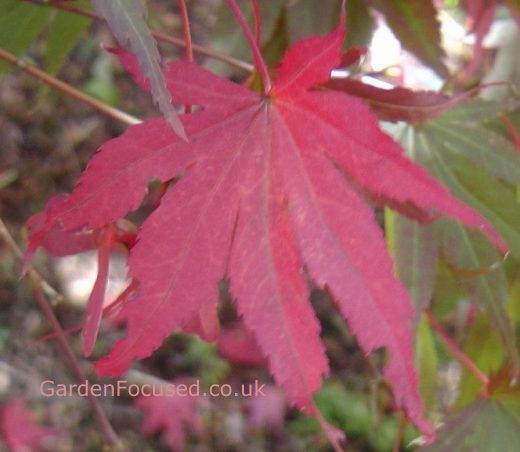JAPANESE MAPLE BENI KAGAMI
Article and pictures by David Marks.
In English ‘Beni kagami’ means ‘red mirror’. The relevance of this name is not clear to us!
As the picture on the right shows Beni Kagami forms its branches close to the ground which makes for an attractive tree. In good conditions this acer will grow strongly and quickly form a good sized tree. Its size suits it to medium to large sized gardens. Although this is a graceful and well coloured tree, stockists are hard to find.
KEY FEATURES ACER PALMATUM BENI KAGAMI
| Genus | Acer |
| Species | palmatum |
| Variety | ‘Beni kagami’ |
| Light | Part shade |
| Hardy | Yes |
| Soil | Most, but best slightly acidic and well-drained |
| Height | 8m / 25ft after 20 years |
| Spread | 8m / 25ft after 20 years |
| Form | Short main trunk, ground hugging |
| Colour | Orange red, bright crimson |
| Bonsai | No |
LEAF AND TREE FORM
The leaves are medium sized, with seven lobes divided nearly to the leaf base. The lobes have well-defined teeth on the edges.
The fruit is bright scarlet and in most years these are freely produced.

CULTIVATION OF ACER PALMATUM 'BENI KAGAMI'
POSITION
Acer japonicum 'Vitifolium' prefers a slightly acidic soil which is well drained but not dry. Ideally they should be in a partial shade position but a full sun position in cooler areas is also
ideal.
PRUNING
When the tree is approaching the size you require, prune annually after leaf fall in late November to very early January in UK weather conditions. Choose a dry day. Don't paint over the wounds, leave them to dry off naturally and quickly. A sharp and clean pair of secateurs is the ideal tool.
In older trees (five years and older) prune away some of this twiggy growth in the centre of the tree if it is becoming congested. This will allow good air circulation and help prevent fungal infections.
FEEDING AND WATERING
Avoid feeding this variety of Japanese Maple, it will be able to absorb sufficient nutrients on its own. Excessive nutrients in the soil cause soft growth which will be liable to frost damage in the winter.
In the first two years of its life water the tree if conditions become dry. After that only water if there is a significant drought. A mulch of well rotted compost or similar around the base of the tree will reduce water loss and maintain an even supply.
For more comprehensive details about caring for your Japanese Maple tree click here.
SUPPLIERS
HIPPOPOTTERING NURSERY
Online only



